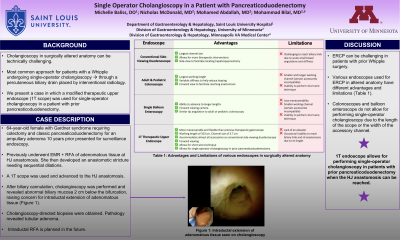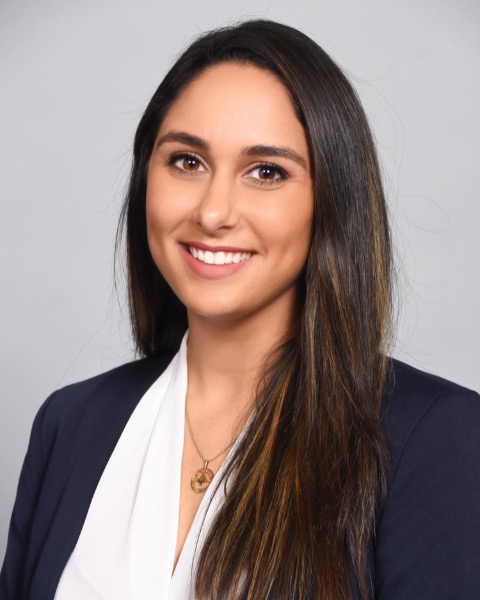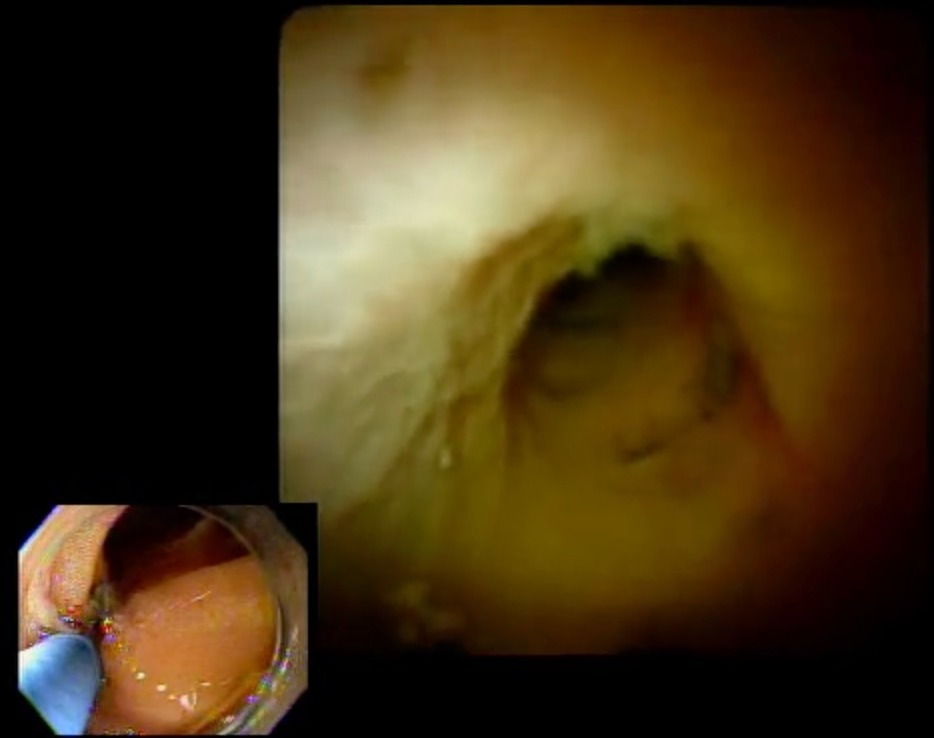Back


Poster Session D - Tuesday Morning
Category: Biliary/Pancreas
D0058 - Single Operator Cholangioscopy in a Patient With Pancreaticoduodenectomy
Tuesday, October 25, 2022
10:00 AM – 12:00 PM ET
Location: Crown Ballroom

Has Audio

Michelle Baliss, DO
Saint Louis University
St. Louis, MO
Presenting Author(s)
Michelle Baliss, DO1, Nicholas McDonald, MD2, Mohamed Abdallah, MD2, Mohammad Bilal, MD3
1Saint Louis University, St. Louis, MO; 2University of Minnesota, Minneapolis, MN; 3University of Minnesota, Minneapolis VA Medical Center, Minneapolis, MN
Introduction: Cholangioscopy in patients with surgically altered anatomy can be technically challenging. In most patients with pancreaticoduodenectomy undergoing single operator cholangioscopy, the most common approach is through a percutaneous biliary drain placed by interventional radiology. We present a case in which a modified therapeutic upper endoscope (1T scope) was used for single operator cholangioscopy in a patient with pancreaticoduodenectomy.
Case Description/Methods: A 64-year-old female with Gardner syndrome requiring colectomy and classic pancreaticoduodenectomy for an ampullary adenoma 10 years prior presented for surveillance endoscopy. She previously underwent endoscopic mucosal resection and intraductal radiofrequency ablation (RFA) of adenomatous tissue at the hepaticojejunal (HJ) anastomosis. She subsequently developed a stricture at the HJ anastomosis needing sequential dilations. A 1T scope was used and advanced to the HJ anastomosis. After balloon dilation of the HJ anastomotic stricture, cholangioscopy was performed and revealed abnormal biliary mucosa [Figure 1] approximately 2 cm below the hilum raising concern for intraductal extension of adenomatous tissue. Cholangioscopy directed biopsies were obtained and pathology revealed tubular adenoma without high-grade dysplasia. Intraductal RFA is planned in the future.
Discussion: ERCP in patients with pancreaticoduodenectomy can be challenging. Different endoscopes have been used to overcome some challenges of ERCP in altered anatomy, each offering certain advantages and limitations. Commonly used endoscopes for ERCP in patients with pancreaticoduodenectomy include the adult and pediatric colonoscopes and single balloon enteroscope. These endoscopes do not allow for performing single operator cholangioscopy due to the length of the scope or the width of the accessory channel. Our report highlights that the 1T endoscope allows for performing single operator cholangioscopy in patients with prior pancreaticoduodenectomy when the HJ anastomosis can be reached.

Disclosures:
Michelle Baliss, DO1, Nicholas McDonald, MD2, Mohamed Abdallah, MD2, Mohammad Bilal, MD3. D0058 - Single Operator Cholangioscopy in a Patient With Pancreaticoduodenectomy, ACG 2022 Annual Scientific Meeting Abstracts. Charlotte, NC: American College of Gastroenterology.
1Saint Louis University, St. Louis, MO; 2University of Minnesota, Minneapolis, MN; 3University of Minnesota, Minneapolis VA Medical Center, Minneapolis, MN
Introduction: Cholangioscopy in patients with surgically altered anatomy can be technically challenging. In most patients with pancreaticoduodenectomy undergoing single operator cholangioscopy, the most common approach is through a percutaneous biliary drain placed by interventional radiology. We present a case in which a modified therapeutic upper endoscope (1T scope) was used for single operator cholangioscopy in a patient with pancreaticoduodenectomy.
Case Description/Methods: A 64-year-old female with Gardner syndrome requiring colectomy and classic pancreaticoduodenectomy for an ampullary adenoma 10 years prior presented for surveillance endoscopy. She previously underwent endoscopic mucosal resection and intraductal radiofrequency ablation (RFA) of adenomatous tissue at the hepaticojejunal (HJ) anastomosis. She subsequently developed a stricture at the HJ anastomosis needing sequential dilations. A 1T scope was used and advanced to the HJ anastomosis. After balloon dilation of the HJ anastomotic stricture, cholangioscopy was performed and revealed abnormal biliary mucosa [Figure 1] approximately 2 cm below the hilum raising concern for intraductal extension of adenomatous tissue. Cholangioscopy directed biopsies were obtained and pathology revealed tubular adenoma without high-grade dysplasia. Intraductal RFA is planned in the future.
Discussion: ERCP in patients with pancreaticoduodenectomy can be challenging. Different endoscopes have been used to overcome some challenges of ERCP in altered anatomy, each offering certain advantages and limitations. Commonly used endoscopes for ERCP in patients with pancreaticoduodenectomy include the adult and pediatric colonoscopes and single balloon enteroscope. These endoscopes do not allow for performing single operator cholangioscopy due to the length of the scope or the width of the accessory channel. Our report highlights that the 1T endoscope allows for performing single operator cholangioscopy in patients with prior pancreaticoduodenectomy when the HJ anastomosis can be reached.

Figure: Figure 1: Intraductal extension of adenomatous tissue seen on cholangioscopy
Disclosures:
Michelle Baliss indicated no relevant financial relationships.
Nicholas McDonald indicated no relevant financial relationships.
Mohamed Abdallah indicated no relevant financial relationships.
Mohammad Bilal indicated no relevant financial relationships.
Michelle Baliss, DO1, Nicholas McDonald, MD2, Mohamed Abdallah, MD2, Mohammad Bilal, MD3. D0058 - Single Operator Cholangioscopy in a Patient With Pancreaticoduodenectomy, ACG 2022 Annual Scientific Meeting Abstracts. Charlotte, NC: American College of Gastroenterology.
